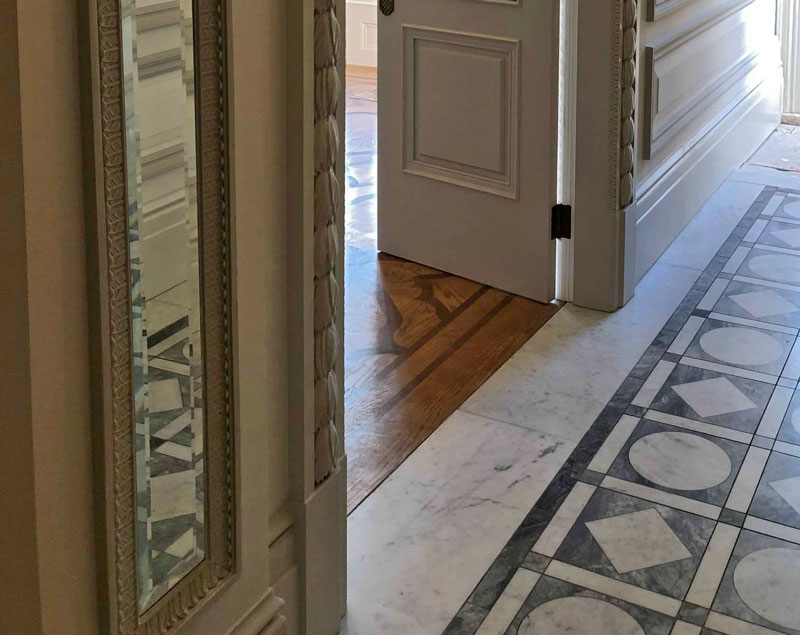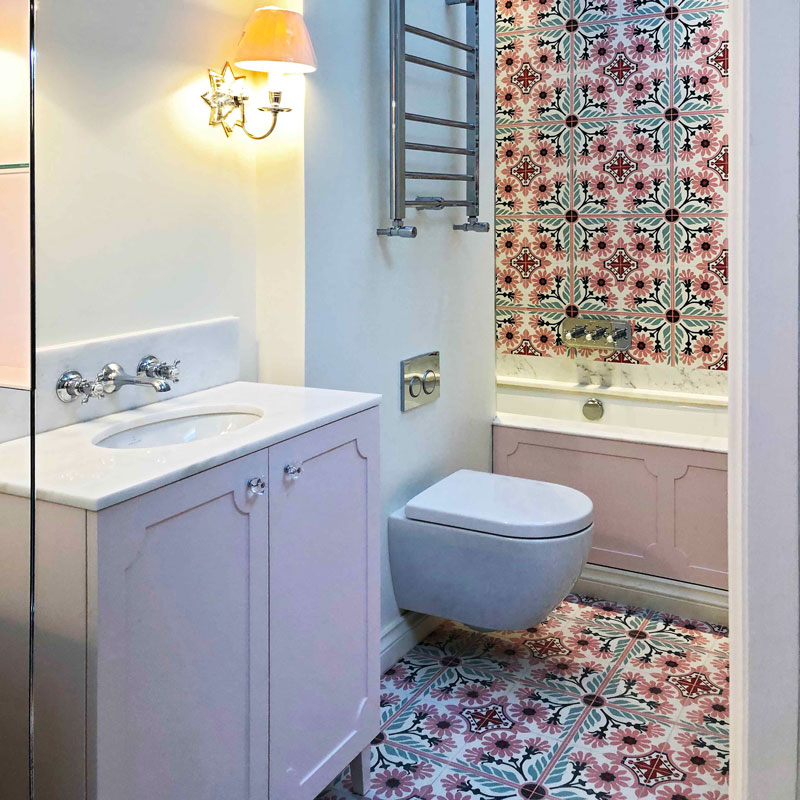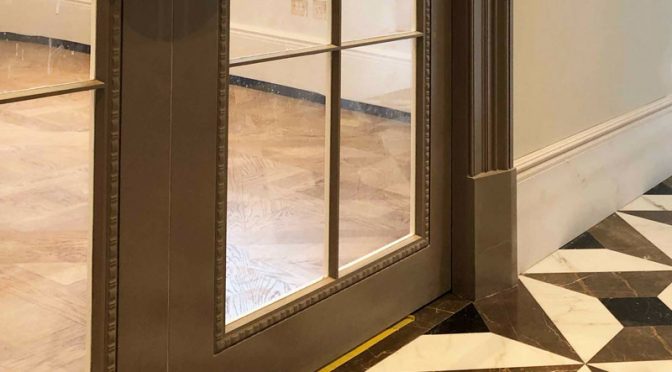Tiles make a great choice when it comes to covering floors — they’re stylish, durable and in general, pretty easy to maintain. In the past, we’ve tended to think of tiles as purely for kitchens and bathrooms. However these days, we’re copying our Continental cousins and using tiles in almost every room. But with so much choice on offer, it can sometimes be daunting knowing which tile is right for you. After all, tiles come in different shapes, sizes and materials and they’re not born equal.
It can be easy to get tiles confused – ceramic, porcelain, natural stone, cement and encaustic tiles, particularly as they can look similar. But much of their difference depends on their components and how they’re manufactured.
When it comes to encaustic and cement, the main difference is that the latter is just that, a body of cement. Unlike encaustic tiles, they’re also pressed then left to cure, rather than being fired in a kiln. Today cement, or rather cement-effect tiles, is back in fashion. These faithfully mimic the warm, colourful patterns and slight handmade imperfections of the originals, but because they’re made from ceramic and porcelain are much more versatile.
Meanwhile, encaustic tiles (known by many names including Baldosa Hidraulicas in Spain, Cuban tiles in the USA and Carreaux de Ciment in France), were extremely popular during the turn of the twentieth century, and they’re back in fashion again.

They were originally individually hand made in the 1800s and the process has hardly changed. The tiles are made using a mix of up to six different coloured pigments, crushed marble and cement. The coloured pigment is poured in to a mould separating all the different sections of the pattern. The dry cement and marble mix is sprinkled on to the pigment to get out any moisture. Following that a sand and cement mix is poured on top of the mix, and a metal lid is placed on the frame. Finally the whole frame is placed under a hydraulic press, and 1000lbs of pressure is put through it.
Here in the UK, we are lucky to have so many examples of this time-honoured method, thanks to the Victorians. They took what had been a small-scale production method and turned it into a mass-market machine, with monochrome patterns being a particularly popular motif, often seen in hallways – creating an impressive first impression of someone’s home interior.
It’s still possible to source original, handmade encaustic tiles, but today there are ranges of encaustic-effect tiles (made from either ceramic or porcelain). These will give a room the charm and character of the originals, but because they’re made from modern ceramic and porcelain they’re easier to care for.

Then there’s terracotta. Rustic and hard-waring, handmade terracotta tiles (often seen as the preserve of Mexican or Continental traditions) have a tactile finish and a rich, warm colour. Made from rich dark clay, which is allowed to dry or fired at a low temperature, terracotta tiles come in a range of red and earthen hues, with charming imperfections due largely to the iron deposits contained within the clay.
As delightfully quirky as these unique qualities can be, unglazed terracotta is very porous and can stain easily. A surface glaze will cure these issues, but will also reduce its unique patina.
So, whether you want tiles that are patterned, embossed or multicoloured, there choice of materials, shapes and hues is huge. There’s a lot to be said for the patterned floor tiles, but many high-end interior designers might agree with the master, Leonardo da Vinci who said: “Simplicity is the ultimate sophistication.”
